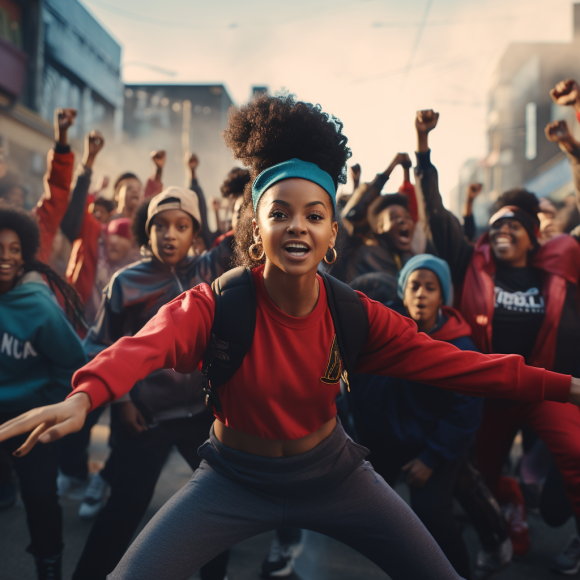Street dance is a dynamic and vibrant form of dance that has its roots deeply embedded in urban communities. Also known as vernacular dance or hip-hop dance, street dance emerged as a powerful form of self-expression and storytelling among marginalized communities in cities. Over the years, it has evolved and diversified, becoming a global phenomenon that captivates audiences of all ages and backgrounds.
The Roots of Street Dance
Street dance originated in the 1970s in the Bronx, New York City, during a time of social and economic challenges. African American and Latino youth, facing socioeconomic disparities and racial discrimination, found solace and strength through dance in the streets and community centers.
In these environments, young dancers developed unique moves inspired by a blend of cultural influences, including African dance, tap dance, jazz, and funk. The dance style quickly spread to other urban areas, and various elements such as breaking, locking, popping, and freestyle emerged as distinctive components of street dance.
The Rise of Hip-Hop Culture
Street dance became an integral part of the larger hip-hop cultural movement. Hip-hop culture encompasses not only dance but also rap music, graffiti art, and DJing. It provided a platform for young people to express their thoughts, feelings, and experiences through artistic means.
The dance battles and cyphers of the early days laid the foundation for competitive street dance events and performances that we see today. The rise of hip-hop music in the 1980s brought even more attention to street dance, as artists like Michael Jackson popularized its moves through music videos and performances.
Global Impact and Diversification
As hip-hop music and culture spread worldwide, street dance gained international recognition. Dancers from different countries and backgrounds embraced the art form and infused it with their cultural identities, adding to its diversity and richness.
Today, street dance has evolved beyond its hip-hop origins and encompasses a wide range of styles and fusions, including krumping, house, waacking, and more. Each style carries its unique history and artistic expression, reflecting the creativity and innovation of its practitioners.
Influence on Mainstream Culture
Street dance has had a profound impact on mainstream culture, influencing not only the dance industry but also fashion, advertising, and entertainment. Major artists and choreographers incorporate street dance elements into music videos, award shows, and live performances, exposing the art form to a broader audience.
The popularity of street dance competitions, television shows, and online platforms has further propelled its visibility and accessibility. This increased exposure has also opened up opportunities for street dancers to pursue careers in the entertainment industry, as choreographers, performers, and instructors.
Conclusion
Street dance is more than just a dance style; it is a cultural movement that empowers individuals to express themselves, connect with others, and overcome challenges. Its evolution from the streets of the Bronx to an influential global art form showcases the resilience and creativity of its community.
In the upcoming articles, we will delve deeper into the various street dance styles, iconic dancers and choreographers, and how street dance continues to shape the world of dance and artistic expression.
Keep dancing, keep evolving, and keep expressing yourself through the powerful language of street dance!
Stay tuned for more exciting – Your Source for Everything Street Dance!




